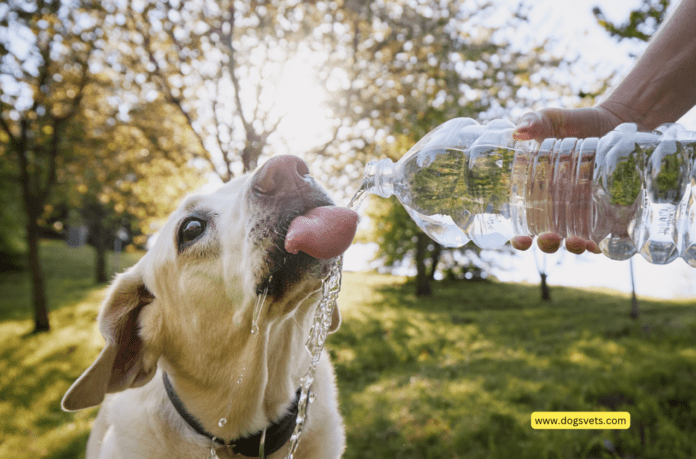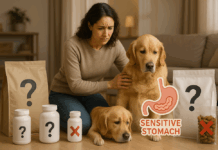Last Updated on November 9, 2023 by Dogs Vets
Bark Bright, Drink Right: A Guide to Dog-Friendly Water Safety
Clean water is essential for the well-being of both humans and their furry companions. We often don’t realize the potential dangers lurking in our water supply, posing threats to our beloved pets.
Dogs, just like us, can fall victim to waterborne diseases if their water source is contaminated.
In this blog post, we’ll explore the various aspects of waterborne diseases in dogs, understand how contaminated water affects them, and most importantly, learn practical tips to prevent these diseases by maintaining a clean water supply.
When Water Goes Haywire
To comprehend the risks, it’s crucial to first understand what constitutes a contaminated water supply.
Contamination can stem from various sources like polluted rivers, groundwater, industrial runoff, agricultural chemicals, and sewage leakage. Identifying these sources is the first step in safeguarding your pet’s health.
Barking Up the Wrong Water Pipe
According to pet experts from Mary Valley Pet Cremation, waterborne diseases in dogs are a serious concern for pet owners, as our furry friends are susceptible to various pathogens lurking in contaminated water sources.
Understanding these diseases and recognizing their symptoms is crucial for ensuring our pets’ well-being.
- Leptospirosis: A bacterial infection caused by the Leptospira bacteria. Dogs can contract this disease through contact with water or soil contaminated with the urine of infected animals. Common carriers include rodents and wildlife. Leptospirosis can lead to severe liver and kidney damage in dogs.
- Giardiasis: Caused by the Giardia parasite and affects the gastrointestinal tract of dogs. Dogs usually contract Giardia by ingesting contaminated water, often from stagnant ponds or puddles. This disease can cause diarrhoea, vomiting, weight loss, and dehydration.
- Campylobacteriosis: A bacterial infection caused by Campylobacter jejuni. Dogs can get infected by consuming contaminated water or undercooked meat. This disease affects the intestinal tract and can result in diarrhoea, abdominal pain, and fever.
Remember that dogs interact with water in various ways – drinking, swimming, and playing. When they come into contact with contaminated water, it affects their health and weakens their immune system.
Just like humans, dogs are vulnerable to the harmful effects of waterborne pathogens.
Animal Aqua Alert
So, what can responsible pet owners do to protect their furry friends? Firstly, ensuring a safe water supply is paramount. Investing in water filters specifically designed for pets can make a significant difference.
Regular water testing is also essential to catch any issues before they escalate. Equally important are routine veterinary check-ups and vaccinations, which act as shields against waterborne diseases.
Pipe Dreams and Leaky Realities
Beyond these precautions, a proactive approach involves maintaining your water supply infrastructure. Regular inspection of water tanks and pipes is key.
If you own a water tank, ensure that your water tank liner is always replaced periodically to prevent contamination. Keep an eye out for water stains, unusual noises, or changes in water pressure – these could be signs of a leak.
Cleaning and disinfecting water tanks and pipes every once in a while also ensures a clean supply, free from harmful pathogens.
Conclusion
Our furry companions rely on us to keep their environment safe, especially when it comes to something as fundamental as water.
Understand these risks, recognize the symptoms, and take proactive measures so we can ensure that our dogs lead healthy, happy lives.
Let’s be mindful of our water sources, maintain our water supply infrastructure, and prioritize our pets’ well-being.
Together, we can keep them safe from waterborne diseases and provide them with the loving, secure home they deserve.
Fact Check
We strive to provide the latest valuable information for pet lovers with accuracy and fairness. If you would like to add to this post or advertise with us, don’t hesitate reach us. If you see something that doesn’t look right, contact us!

















